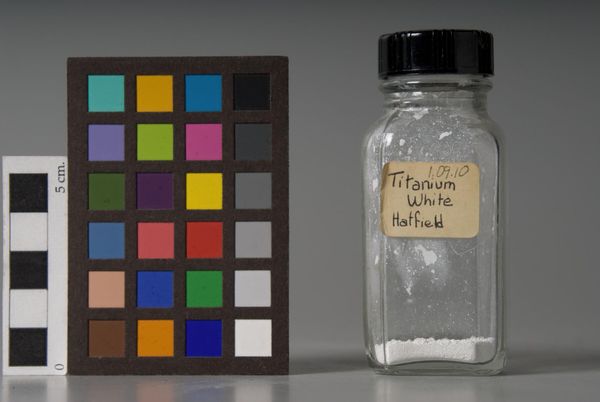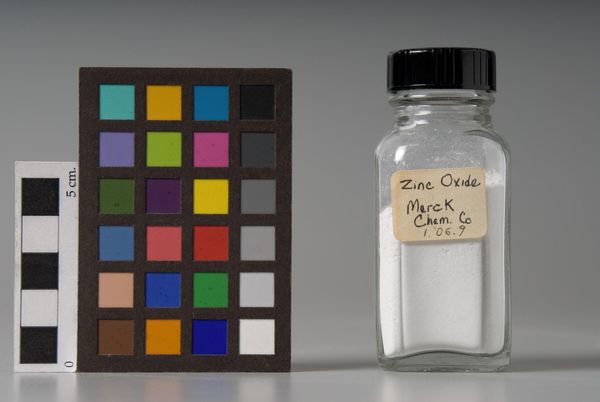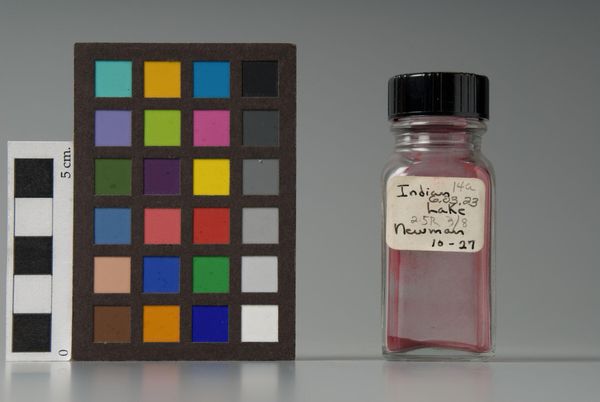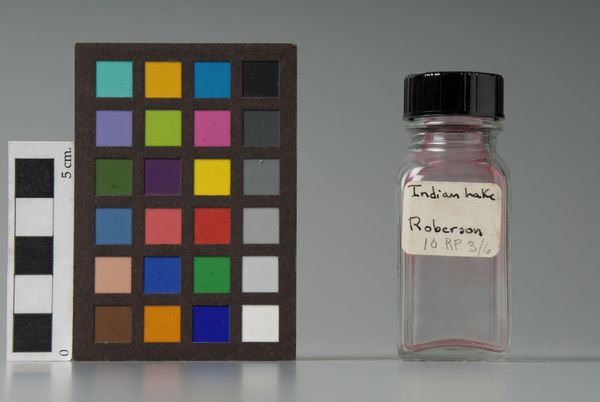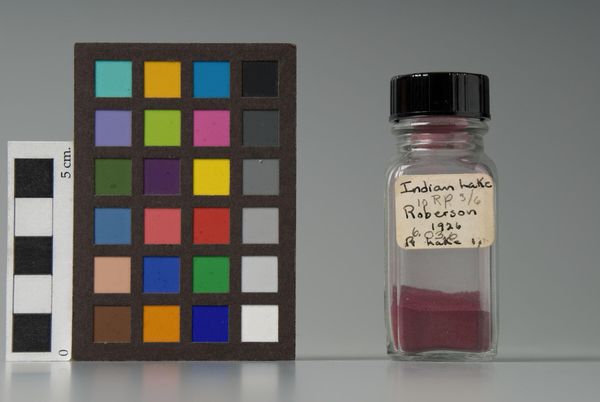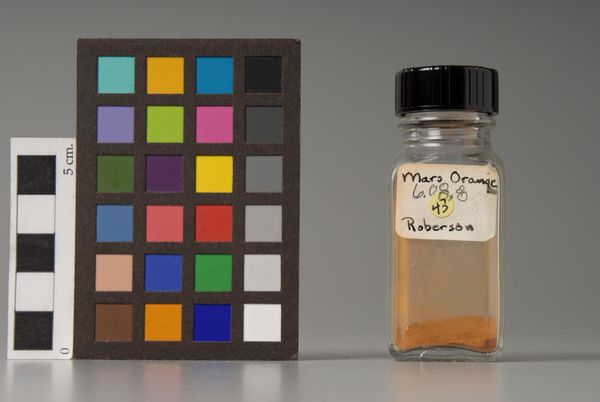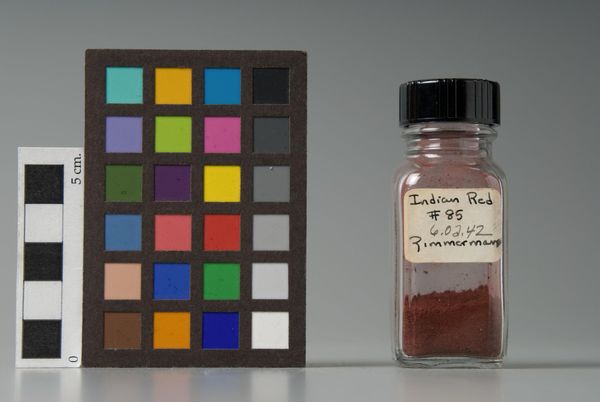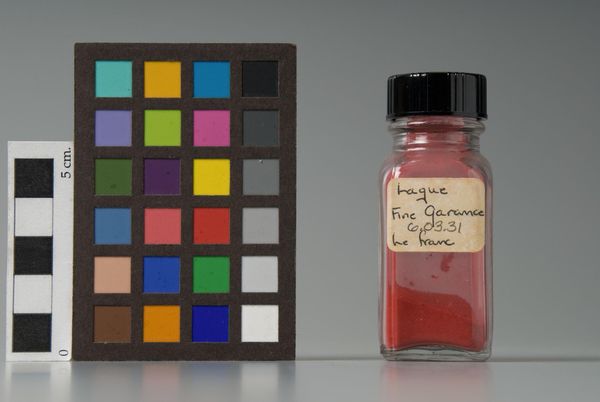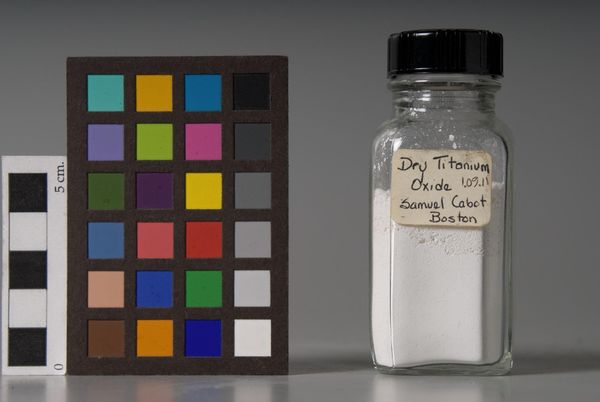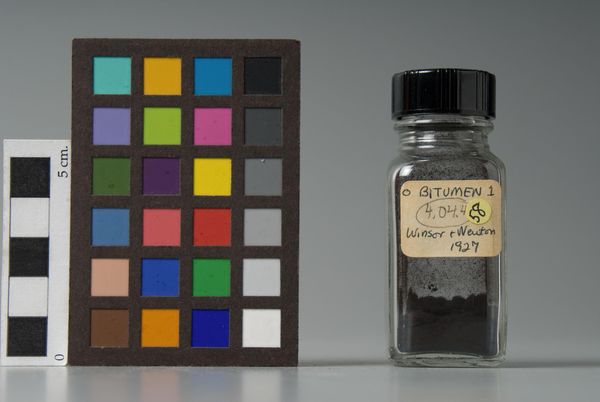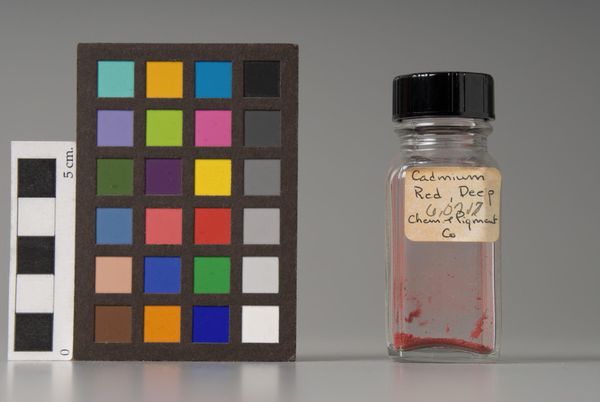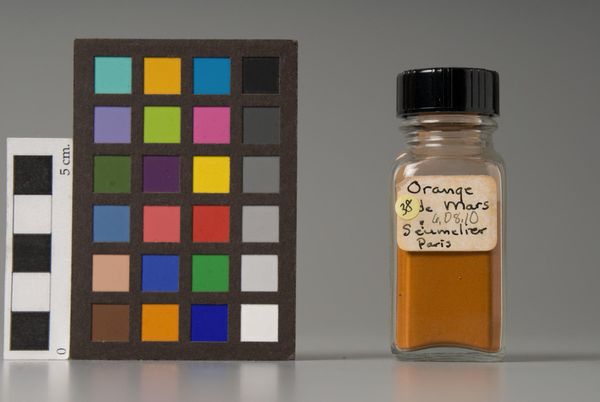
Copyright: CC0 1.0
Curator: Here we see the "Lithophon," a manufactured pigment by Tizian Color Co., residing in the Harvard Art Museums collection. My initial impression is of a clinical study, an artifact hinting at industrial practices. Editor: Indeed. I'm immediately struck by the stark contrast between the vibrant color chart and the unassuming bottle of white pigment. It's a visual dichotomy—a representation of both the potential for color and its fundamental base. The Lithophon name itself resonates with the idea of sound made visible, like visual music. Curator: Precisely. Lithophon was widely used as a white pigment in paints and coatings. It is a mixture of barium sulfate and zinc sulfide, two compounds with their own histories and cultural significances. The barium evokes a sense of purity, while the zinc alludes to protection and preservation. Editor: The composition is remarkably balanced, mirroring the scientific precision of its creation. The grid-like structure of the color chart juxtaposes with the soft, rounded form of the glass bottle, creating a subtle tension. It's like a visual equation, hinting at the complex relationship between raw material and finished artwork. Curator: Reflecting upon this now, I think this little bottle encapsulates a significant chapter in the history of color production and its influence on our visual culture. Editor: I agree, and the visual simplicity of this piece serves as a reminder to look closely at the building blocks of art.
Comments
No comments
Be the first to comment and join the conversation on the ultimate creative platform.

